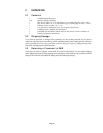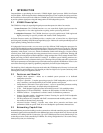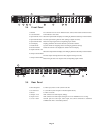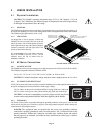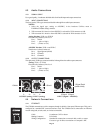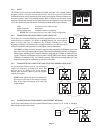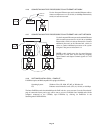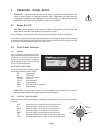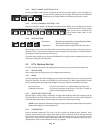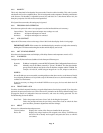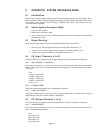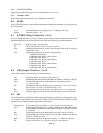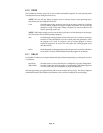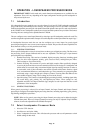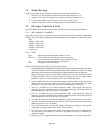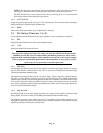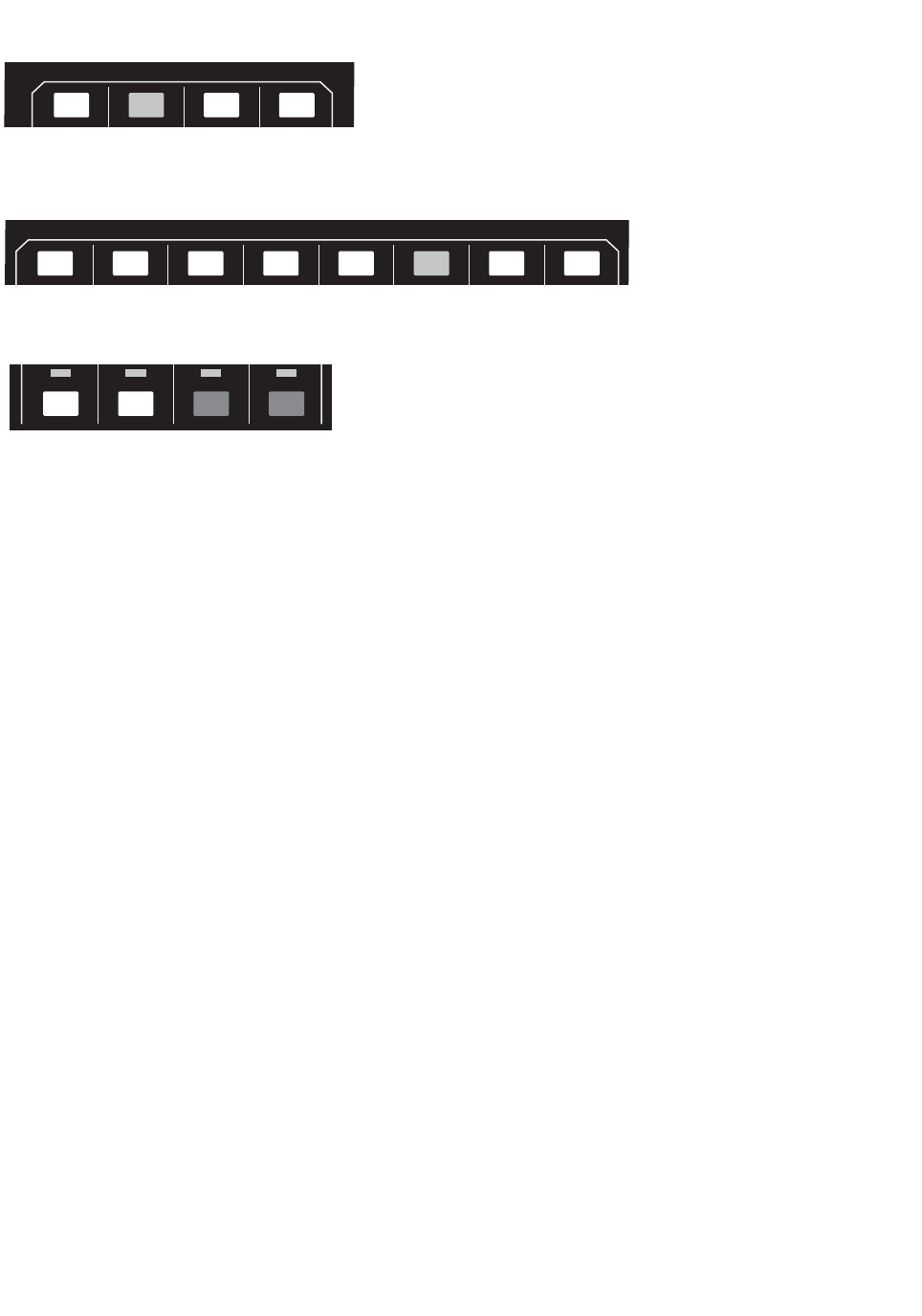
5.2.4 INPUT CHANNELS: BUTTONS A TO D
Pressing an INPUT channel button will illuminate the button and the display screen will display the
selected function’s parameters for this input. This action will also illuminate
the buttons for any output channels to which this input’s audio is routed.
5.2.5 OUTPUT CHANNELS: BUTTONS 1 TO 8
Pressing an OUTPUT button will illuminate the button and the display screen will display the selected
function’s parameters for this output.
This action will not illuminate the
input button routing audio to this
output.
5.2.6 MUTE BUTTONS
Input Mutes: Mutes the output signal of the corresponding Input Channel.
This does not mute the U-Net output.
Output Mutes: Mutes signal to both the output XLR and U-Net output.
Mute settings are not saved with and therefore not recalled from Program files saved in the processor’s
memories. However, the behavior of the mutes may be changed when a program is recalled according to
the Program Load setting made in the UTIL menus.
In contrast, mute settings are saved as part of EAWPilot files (*.ept files) and are uploaded to the processor
as part of the settings stored in those files.
5.3 UTIL (System Set-Up)
The UTIL function menu items are the global parameters for the processor. Set these parameters first.
5.3.1 DEVICE NAME
Enter a unique name for the processor, up to 16 alphanumeric characters.
5.3.2 MODE
Select the operating mode. When changing processor modes all settings will be reset to the factory default
settings for that mode. In order to avoid losing any custom settings, save them using the PROG function
before switching modes. During the mode change, the processor reboots itself and mutes all outputs.
System Processor The processor functions as a standard digital signal processor.
Loudspeaker Processor The processor functions using factory set “Greybox” settings for
particular EAW loudspeaker products.
5.3.3 INPUTS A&B / INPUTS C&D
Select the signal, Analog or AES (=AES/EBU), for Inputs A&B and Inputs C&D. The sample rate for the
AES signal can be 44.1 kHz, 48 kHz, 88.2 kHz, or 96 kHz. The sample-rate converter in the UX8800 will
convert the input sample rates to 48 kHz sample rate required for its internal processing.
NOTE: Input connector B is disabled when digital is selected for Inputs AB and Input connector D is
disabled when digital is selected for Inputs CD.
5.3.4 TEMPERATURE
Enter the ambient temperature. This value is used to calculate the displayed delay distances. These
distances depend on the speed of sound, which depends on the temperature of the air through which the
sound passes. The temperature is adjustable in one degree increments between 32 F degrees and 104 F
degrees or 0 C degrees to 40 C degrees, depending on the Units setting. In Loudspeaker Processor mode,
the temperature is also used to calculate the air loss pre-emphasis.
Page 10
INPUT CHANNELS
INPUT CHANNELS
A
B
CD
OUTPUT CHANNELS
OUTPUT CHANNELS
12345678
INPUTS
Clip
-6
-12
Sig
Sig
Clip
-6
-12
Sig
Sig
Clip
-6
-12
Sig
Sig
Clip
-6
-12
Sig
Sig
MUTE MUTE MUTE MUTE



